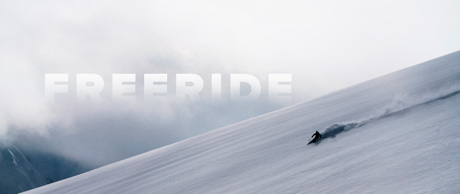FREERIDE WORLD TOUR. “What is Freeride?” Despite an established global presence, it’s not uncommon to hear the uninitiated ask this simple question. In short, Freeride is the purest form of ski and snowboard competition: a start gate on top of a mountain, and a finish line at the bottom. An unaltered, natural mountainside with no set course and no clock. An international field of elite athletes all have a chance, and the best top-to-bottom run wins! It is the ultimate expression of freedom and personal style on snow-covered mountains, and the Freeride World Tour is the arena where the world’s top riders come together to determine who among them is the best.

The following is a brief look at the basics of FWT:
QUALIFICATION
First, the Freeride Junior Tour (FJT) is the incubation stage, where promising young riders develop their skills and begin to build their global ranking. Riders 18 years old and above compete in Freeride World Qualifier (FWQ) events which, for a lucky and talented few, are the gateway to the elite Freeride World Tour (FWT).
At the top, the Freeride World Tour athlete field includes 22 ski men, 10 ski women, 9 snowboard men and 7 snowboard women. Following the second-to-last stop on the tour only the top 60% of challengers secure a spot in the final in Verbier, Switzerland as well as next season's roster :
Top 6 ski Women (out of 10)
Top 13 ski Men (out of 22)
Top 6 snowboard Men (out of 9)
Top 4 snowboard Women (out of 7)
The spots vacated by riders finishing below the cut line are taken by the top FWQ riders. These fresh faces consistently bring an infusion of exciting new energy and style, fueled by their hunger for success at the top level. Finally, the FWT athlete roster is rounded out by several Wild Card riders, giving past champions and local standouts the chance to shine on a season-long or single event basis.
VENUE INSPECTION AND ACCESS
One essential principle in Freeride is that riders don’t get “practice runs”, and are forbidden from entering competition venues four weeks prior to each event. Instead, athletes rely on their ability to visually inspect the competition venue in order to choose and memorize a line, and determine snow conditions. They are also supplied with information from a team of expert mountain guides, as well as photos and videos from past years. Occasionally drone footage of the venue is made available as well.
Each event will see riders accessing the top of the venue in a myriad of ways. Typically 30 - 90 minutes of hiking can be expected, combined with mechanized means such as chairlifts and helicopters. And then, its show time!
JUDGING
A team of six judges are tasked with judging rider runs; four judges, a video judge and a head judge. Five general categories form the foundation of the judging system: Difficulty of Line, Control, Fluidity, Jumps and Tricks, Technique. The FWT Rules and Judging Handbooks contains exacting detail about the aspects of judging, and much more.
Stay tuned for more inside knowledge, pro tips and behind-the-scenes coverage from the most exciting events of the winter! Freeride World Tour 2019 is fast approaching!
press release
Freeride World Tour
www.freerideworldtour.com
Lutry, Switzerland
November 27th, 2019

| 

